#eastern yellow wagtail
Text






Deadhorse, Alaska
Taken June 2023
#deadhorse#dalton highway#arctic gothic#north slope#brown bears#eastern yellow wagtail#alaska#signs#my photos#my places#rlwtstcwtsv#oil fields#k
779 notes
·
View notes
Note
hello there! I see you enjoyed learning that willie wagtails exist, so here are some more cool looking birds:

This is a pink robin, found in southeast Australia but more common in Tasmania.

This is an eastern yellow robin. As the name implies, they are found all along Australia's eastern coast. A lucky birdwatcher could see a yellow and a pink robin at the same time!

This is a white-browed tit warbler, found in China, Nepal, and Kyrgyzstan.
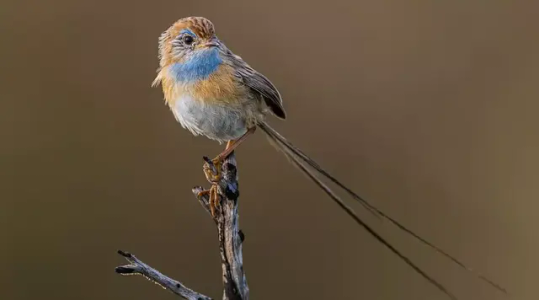
This is a southern emu-wren, found across Australia's southern coast and Tasmania.
Here's what I think you'll enjoy the most:
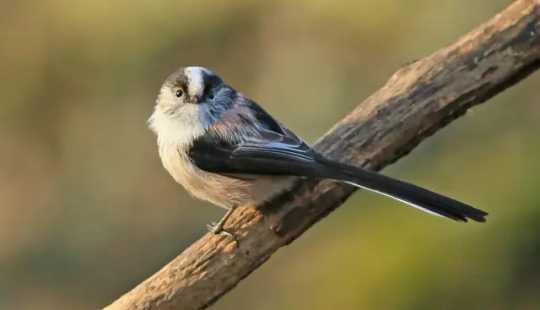
This is a long-tailed tit. Their species is found across Eurasia, but are most common in Europe and Japan. This one's from Europe, ones from Japan...
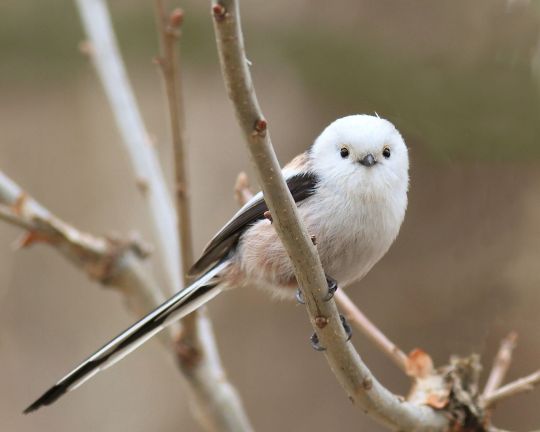
...look like this!
And finally, a picture of my mixed-morph cockatiel, Mittens.

Have a great day!
*in tears (in a good way) thank you mr birdenjoyer...
2 notes
·
View notes
Text
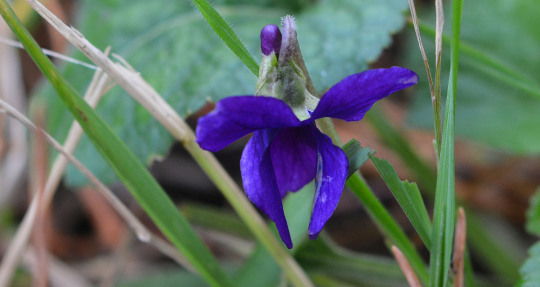

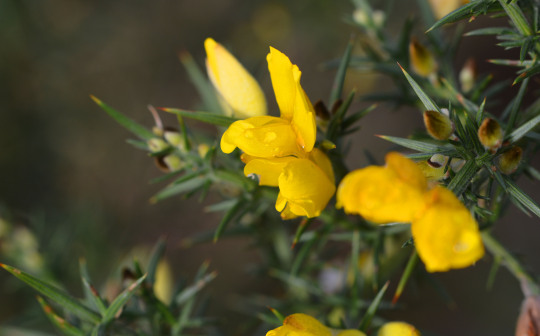

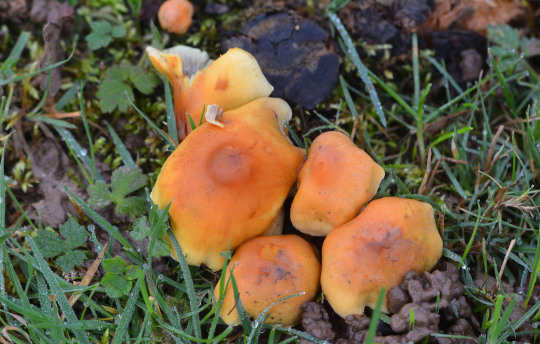
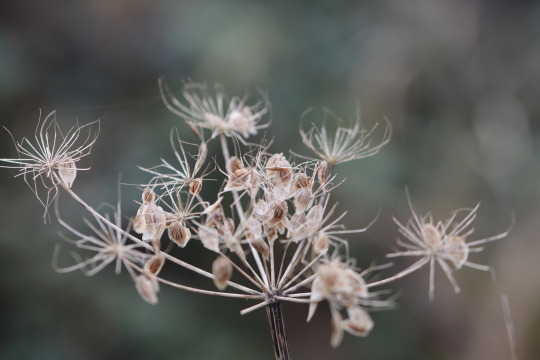
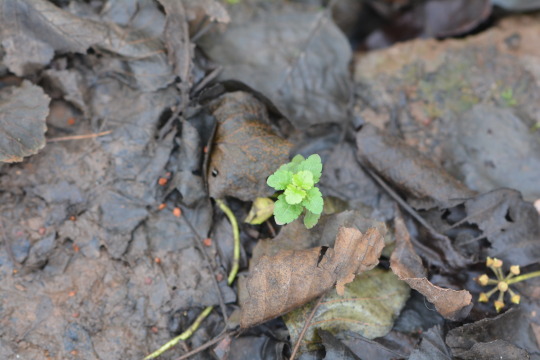


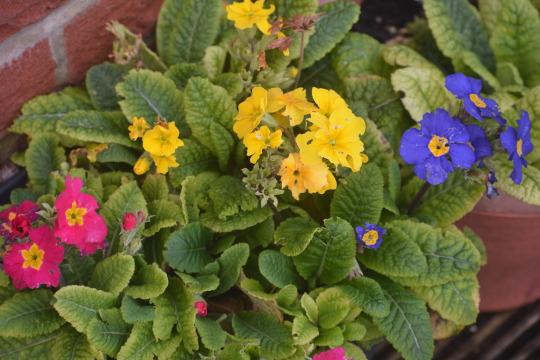
26/12/2023-Boxing Day walks at Lakeside Country Park and bits at home
Flora, fauna and fungi photos taken in this set: 1. A pretty violet I was pleased to find at Lakeside, a key early spring flower for me as the notable point of a fair few flowers being still in flowers morphs into certain species being out in flower early. A fitting flower to see today as that was my Nan's name who always helped make Christmas magical for me as a kid. 2. Woodpigeon in the woods. 3. Bright yellow gorse flower adorned by water droplets. 4. Mallards including an interestingly coloured female. 5. Mushrooms in the southern fenced off area, possibly sulphur tuft. 6. Golden hogweed seed heads. 7. Some speedwell leaves in the woods which have caught my eye of late with some slime mould in shot possible carnival candy slime mould which I've seen a fair bit of lately. 8. Blackthorn sloes which are interesting to see in the eastern meadows in the bushes. 9. An impressive display of fungi around a stump in the southern fenced off area I believe turkey tail. 10. Some beautiful and colourful flowers on the balcony.
It was a great couple of walks at Lakeside for noticing leaves and learning what species they are for some with ivy, spear thistle, clover, green alkanet, oak and bramble also standing out. Cleavers, wild carrot, horseweed, winter heliotrope, dandelion, hazel catkins, old man's beard, hawthorn, rose hips and beautiful privet berries I like their appearance were other plant highlights at Lakeside with steeplebush enjoyed at home with some shoots coming out and the camellia buds starting to form in the front garden. Moss and lichen were good to see too on the walks. Other avian highlights on my walks were vibrant Greenfinches, possible Siskin too, Ring-necked Parakeet heard, Song Thrush singing elegantly which gripped me seeing it well too, Redwings, Blackbird, Robin seen and heard well and immersive views of a Cormorant on beach lake and flying over. House Sparrow, Blue Tit, Great Tit, Long-tailed Tit, Green Woodpecker, Magpie, Jackdaw and Carrion Crow were key species seen very well again. Herring Gull, Moorhen and Great Crested Grebe were good to see too with Starlings and I believe Blue Tit heard at home and the delightful sight as I went out for my second walk of the day of a Pied Wagtail on the ground then on our roof. A great bird that we have had in the garden in winters before which we didn't last winter and not so far this so it was nice to see. I got some great views of Grey Squirrel again and by the violets a fly.
#green woodpecker#robin#song thrush#pied wagtail#photography#outdoors#outside#2023#birdwatching#walking#walk#home#eastleigh#hampshire#england#uk#nature#lakeside#lakeside country park#blackbird#greenfinch#cormorant#speedwell#green alkanet#flowers#plants#leaves#boxing day#europe#december
2 notes
·
View notes
Photo

東黃鶺鴒 Eastern Yellow Wagtail @hk.wetlandpark @afcdgovhk 東黃鶺鴒喺香港受野生動物保護條例 (第170章) 保護。 Eastern Yellow Wagtail in Hong Kong protected by WILD ANIMALS PROTECTION ORDINANCE (CHAPTER 170) #香港 #生態 #香港生態 #大自然 #香港大自然 #觀鳥 #香港觀鳥 #東黃鶺鴒 #新界 #天水圍 #濕地公園路 #香港濕地公園 #hkwetlandpark #afcdgovhk #CarmenKennyLukeYip #HongKong #Ecology #HongKongEcology #Nature #HongKongNature #BirdWatching #HongKongBirdWatching #EasternYellowWagtail #NewTerritories #TinShuiWai #WetlandParkRoad #HongKongWetlandPark #hkwetlandpark #afcdgovhk #CarmenKennyLukeYip(在 香港濕地公園) https://www.instagram.com/p/Ck2uZRDygld/?igshid=NGJjMDIxMWI=
#香港#生態#香港生態#大自然#香港大自然#觀鳥#香港觀鳥#東黃鶺鴒#新界#天水圍#濕地公園路#香港濕地公園#hkwetlandpark#afcdgovhk#carmenkennylukeyip#hongkong#ecology#hongkongecology#nature#hongkongnature#birdwatching#hongkongbirdwatching#easternyellowwagtail#newterritories#tinshuiwai#wetlandparkroad#hongkongwetlandpark
0 notes
Photo

Eastern Yellow Wagtail - Alvéola-amarela-oriental (Motacilla tschutschensis)
Vila Franca de Xira/Portugal (12/02/2020)
[Nikon D500; AF-S Nikkor 500mm F5,6E PF ED VR; 1/400s; F7,1; 500 ISO]
31 notes
·
View notes
Photo
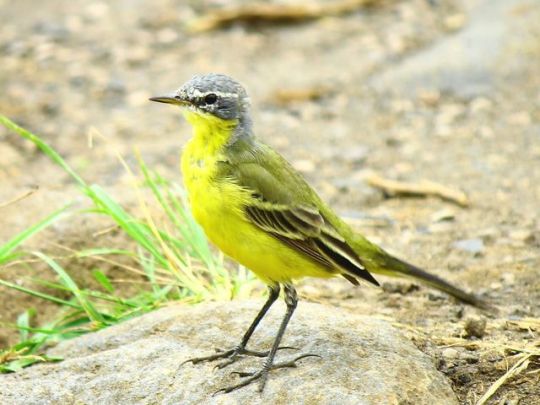
Daily Bird: Eastern Yellow Wagtail
Range: western and northern Alaska
More information: here
Photo: https : // upload . wikimedia . org/wikipedia/commons/thumb/1/1a/Motacilla_tschutschensis%2C_Tomohon%2C_North_Sulawesi.jpg/1200px-Motacilla_tschutschensis%2C_Tomohon%2C_North_Sulawesi.jpg
39 notes
·
View notes
Text
Inner-city Bird Diversity
Birds on our Balconies
We live in a small high-rise on the edge of the Melbourne CBD, on the lowest level of apartments, 6 floors above street level. We are on the intersection of two heavily trafficked streets, with constant construction and traffic noise all day and most of the night. We have two outside terraces and despite the noise and pollution, we have been visited by many birds over the years we have lived here. The list of 19 species that we have seen on our terraces is as follows:
Common Blackbirds
Grey Butcherbirds
Pied Butcherbirds
Sulphur-crested Cockatoos
Pied Currawongs
Rock Doves (Feral Pigeons)
Spotted Doves
Galahs
Silver Gulls (ubiquitous Seagulls)
White-plumed Honeyeaters
Australian Magpies
Magpie-larks
Common (Indian) Mynas
Little Ravens
House Sparrows
Common Starlings
Song Thrush (barely-fledged chick – no idea how it got there)
Red Wattlebirds
Domestic chicken (presumed escapee from a higher apartment in a nearby tower)
In addition, I have also seen regular flypasts by several of the above species as well as four more that have not actually landed on our terraces:
Peregrine Falcons
Nankeen Kestrels
Masked Lapwings
Rainbow Lorikeets
Birds nearby
Most people imagine that big cities are virtually devoid of wildlife and what there is, is limited to cats, dogs, rats, mice, sparrows and seagulls. But landings and sightings from our apartment, less than a kilometre from the centre of the city, number 23 species and I have seen at least another 15 on my walks across the Yarra into the CBD. They include:
Eurasian Coots
Little Black Cormorants
Little Pied Cormorants
Great Cormorants
Darters
Pacific Black Duck
Nankeen Night-herons
White-faced Herons
Australian White Ibises
Australian Pelicans
Welcome Swallows
Black Swans
Chestnut Teal
Grey Teal
Crested Terns
I do quite a lot of bird surveys and within a further kilometre of home, I have reported personal sightings of at least the following 41 additions.
Red-tailed Black-Cockatoo
Long-billed Corella
Black-faced Cuckoo-shrike
Black-fronted Dotterel
Red-kneed Dotterel
Maned Duck (Australian Wood Duck)
Pink-eared Duck
Great Egret
Superb Fairywren
Grey Fantail
European Goldfinch
Australasian Grebe
Hoary-headed Grebe
Common Greenfinch
Pacific Gull
Hardhead
Swamp Harrier
New Holland Honeyeater
Sacred Kingfisher
Eastern Koel
Musk Lorikeet
Bell Miner
Noisy Miner
Dusky Moorhen
Spotted Pardalote
Red-rumped Parrot
Little Penguin
Crested Pigeon
Red-capped Plover
Australian Reedwarbler
Crimson Rosella
Sharp-tailed Sandpiper
White-browed Scrubwren
Silvereye
Grey Shrike-thrush
Royal Spoonbill
Yellow-billed Spoonbill
Pied Stilt
Australian Swamphen
Willy Wagtail
Little Wattlebird
Who would have thought I could possibly have seen 79 different species of urban birds within a kilometre of Southbank – in an area of less than 4 square kilometres? Other people have obviously seen other species as well, so maybe this figure might be closer to 90 species. The landscape is certainly not barren, but I am lucky. I live close to large areas of saltwater, freshwater, marshland, luxuriant parks and gardens with a good range of habitats for so many species. Away from this area, the variety and abundance of wildlife is rarely as prolific.
2 notes
·
View notes
Text
Padma Purana, ch 74 (Arjuna’s Wish and Its Fulfilment) [excerpts]
Then, having bathed in this lake, and having gone to the bank of the eastern lake, and having bathed in its water, accomplish your desire (i.e. desired object).”
Then having heard the words, when Arjuna plunged into the water of the lake, which was tinged with the pollen dropped from white lotuses, lotuses opening on moonrise, (other) lotuses and red and blue lotuses, and which was agree- ably perfumed with honey-drops, which was shaken by the notes of corpulent swans, whose four banks were decked with jewels, which had ripples due to gentle breezes, she vanished just there. The charmingly smiling one got up and on seeing around, was confused.
He instantly saw himself (to be turned into) a wonderful, excellent lady, who had a slim, fair, charming body like the rays of pure gold, whose age was that of a sparkling youth, whose face resembled the autumnal moon, whose hair was very dark, curly, glossy and shining with jewels, whose curls of hair on the plate (-like forehead) were brightened up due to the rays from the mark of red lead, who had vanquished Cupid’s bow due to the knittings of the creeper-like eyebrows being manifest, whose wagtail-like eyes were dark like clouds and sportive, whose round cheeks were sparkling due to the bright lustre of the jewelled ear-rings, whose wonderful creeper-like arms were delicate like lotus-stalks, whose sprout-like hands took away all the beauty of autumnal lotuses, who had put on a waist-band made of gold and arranged cleverly, whose hips were shining with jingling girdles, whose beautiful place of hips was covered with a shining garment, whose lotus-like feet were very charming due to the jingling jewelled anklets, who possessed the skill in the various arts of love being manifested, who was endowed with all {good) characteristics, who was adorned with all ornaments.
Due to the illusion of (i.e. created by) the lover of the cowherdesses he forgot whatever belonged to his former body; and after that, being very much astonished, stood there, not knowing what to do.
[... interlude with goddesses including Radhika]
She saw Krishna whose hair was very glossy, dark, curly and fragrantly perfumed; on whose head was tied the best tail of a peacock intoxicated with madness; on whose left side was the ear-ornament of flowers resorted to by bees; who was shining with the mirrors of his cheeks, bright with the bee-like hair; who was shining with the beauty of the large forehead having a beautiful mark; whose nose was lovely like the sesamum-flower and the eagle’s beak ; whose lips were charming and like the bimba fruits; who inflamed passion of love with his gentle smile; who looked lovely due to the necklace resembling a wild flower; whose both large and charming shoulders were shining with the garland (of the flowers) of the divine tree, resorted to by thousands of intoxicated female bees; who was adorned with the Kaustubha on the region of the chest shining with a pearl necklace; who had the mark of Srivatsa, who was attractive on account of his hands hanging up to the knees; who was very handsome on account of having his waist like that of a lion and with a deep navel; who was lovely due to not long and very round knees like a good tree; who was adorned with excel- lent ornaments like bracelets, armlets, and anklets; whose hips were covered with a portion of his yellow garment ; who had vanquished a crore of Cupids in beauty by means of his loveliness; who enchanted (others) by means of charming songs proceeding from his flute; who made the three worlds plunge into the ocean of happiness; who had the arrogance of Cupid in every part of his body; who was tired due to his interest in dancing.
There were deities appointed at respective places, observing his internal feelings, having fixed their eyes on his face, who were in due order and with respect carrying separately a chowrie, a fan, a flower, a perfume, sandal, and tambula, a mirror, a drinking vessel, a spitting pot, and also other objects of sport, so also frankincense and an amulet.
Arjunlya, having seen in confusion on the left side of the pleasing goddess Radhika, propitiating and offering a tambula to him of a bright smile, was overcome with the passion of love.
Then Krishna, who knew everything, knowing her to be like that, seized her hand, and he the lord, the great master of magical art secretly sported with her in the entire pleasure-forest.
Then putting his sport-like arm on her shoulder and coming to Sarada, said to her: “Bathe quickly this slim-bodied lady of a gentle smile, fatigued due to sport, in this western lake.” Then that goddess Sarada (took her) to the western lake, (and) said to her, “Take bath”.
The fatigued one did like that. She who got to the interior of the water, again turned into Arjuna and got up at the place where the lord of gods and the chief of the beautiful Vaikuntha stood. Seeing Arjuna dejected and broken-minded, Krishna kindly touched him with his hand and put him (back) to his nature.
(https://archive.org/stream/in.ernet.dli.2015.100006/2015.100006.The-Padma-purana-Part-6_djvu.txt)
for @parlegee
7 notes
·
View notes
Photo
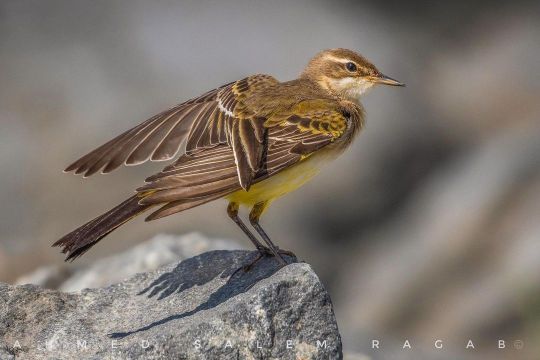
ذعرة صفراء يسمى أيضاً أبو فصادة او صعوة (الاسم العلمي: Motacilla flava) (بالإنجليزية: Western Yellow Wagtail) هو طائر ينتمي إلى طيور التمرة وأم عجلان (فصيلة: Motacillidae). عرف بـ (صعوة) ��سبة إلى صغر حجمها. طائر مهاجر عابر شائع ومنتشر في موسم الهجرة الشتوية والربيعية، يألف المناطق ذات الغطاء النباتي المروّي المناطق الزراعية، والأراضي المكشوفة. يصل طول الجسم إلى 16،5 سم تقريباً، يتميز الذكر عند التكاثر بأن السطح الظهري ومؤخرة الذيل أخضر زيتوني، ويغطي السطح البطني اللون الأخضر مع بياض في أطراف ريش الذيل، أما ريش رأس الطائر فيتميز تبعاً للنوع وغالباً يكون أصفر أو الزيتوني، حيث تتباين ألوان ريش رؤوس الذكور في الصيف: ذكر ذو الرأس الأزرق: حيث يغطي اللون الأزرق الرمادي قمة الرأس ومؤخرة العنق والأذن، ويمتد اللون الأبيض أسفل المنقار، الذقن أبيض اللون، الزور أصفر اللون. ذكر ذو الرأس الأسود: حيث يغطي اللون الأسود الرأس، والذقن أصفر اللون. ذكر ذو الرأس الرمادي: حيث قمة الرأس ومؤخرة العنق رمادي اللون، وتغطي الأذن بلون الأسود، والذقن أبيض أو أصفر اللون، ويغطي اللون البني السطح الظهري للذكر والاناث في الشتاء، ويكون السطح البطني أفتح لوناً. يتكاثر في الفترة ما بين مايو إلى يوليو، وتضع الأنثى من 5 إلى 6 بيضات في أعشاش من النباتات في مخابئ على الأرض. ويلاحظ أن الصعوة والسلحوت يشابهان ف الشكل ولا يتشابهان في اللون. يتغذى على الحشرات والديدان وهو يحرك ذيله باستمرار إلى أعلى وأسفل، أثناء التغذية. ============= @boyahia ============= The western yellow wagtail (Motacilla flava) is a small passerine in the wagtail familyMotacillidae, which also includes the pipitsand longclaws. This species breeds in much of temperate Europe and Asia. It is resident in the milder parts of its range, such as western Europe, but northern and eastern populations migrate to Africa and south Asia. It is a slender 15–16 cm long bird, with the characteristic long, constantly wagging tail of its genus. It is the shortest tailed of the European wagtails. The breeding adult male is basically olive above and yellow below. In other plumages, the yellow may be diluted by white. The heads of breeding males come in a variety of colours and patterns depending on subspecies. (at شاليهات الدوحه الشرقيه) https://www.instagram.com/p/CU4plmbKeBt/?utm_medium=tumblr
0 notes
Text

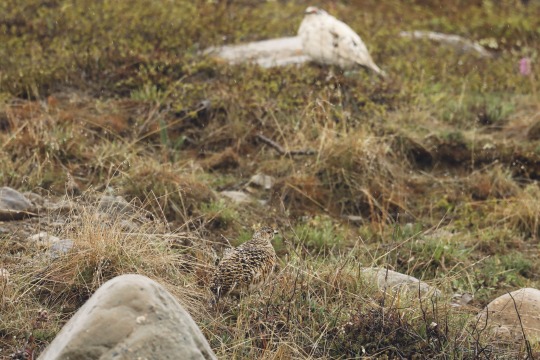


Camouflage on the arctic tundra near Deadhorse, Alaska
Taken June 2023
#eastern yellow wagtail#smith's longspur#northern pintail#rock ptarmigan#birds#my photos#tundra#arctic#alaska#north slope#dalton highway#iypdgthv
164 notes
·
View notes
Link
240 Eastern Yellow Wagtail by William--King #impressionism #fineart #limitededition #abstract #painting #drawing #art #digital #prints #originalart #wildlife #animals #birds #nature #countryside
#art#drawing#painting#birds#animals#wildlife#nature#countryside#bird#digital#prints#originalart#fineart#impressionism
0 notes
Text
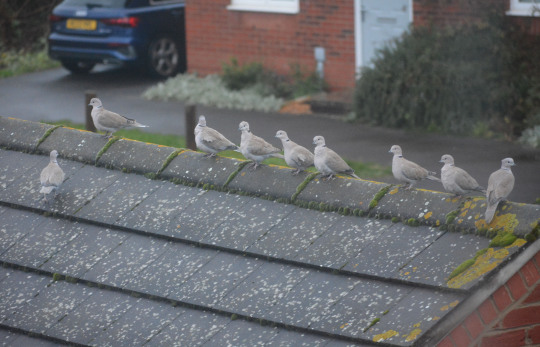
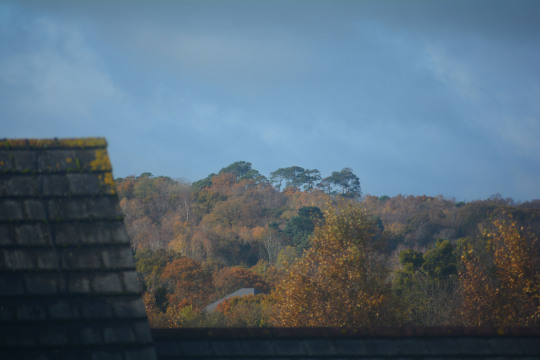


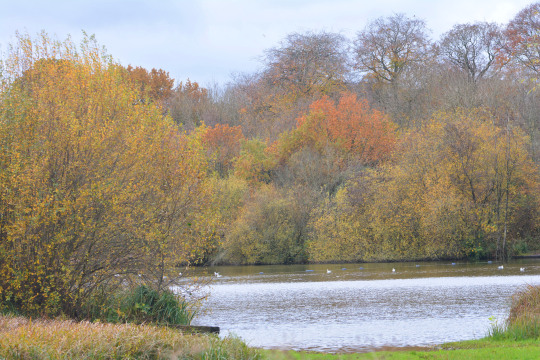
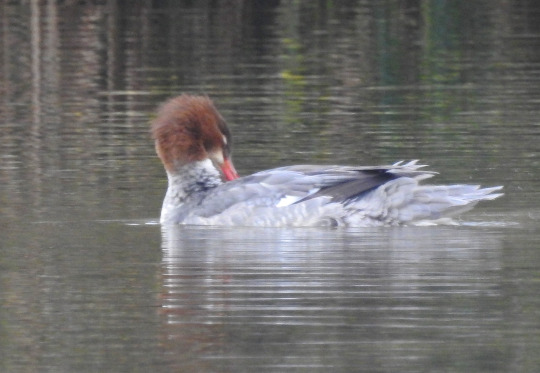
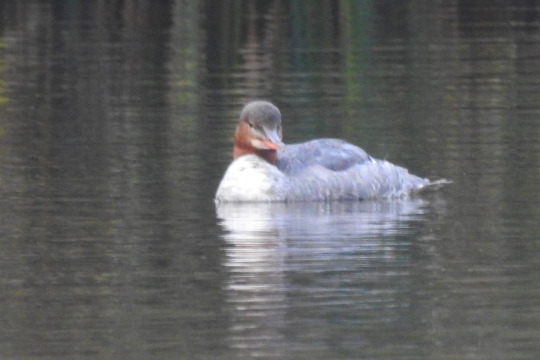
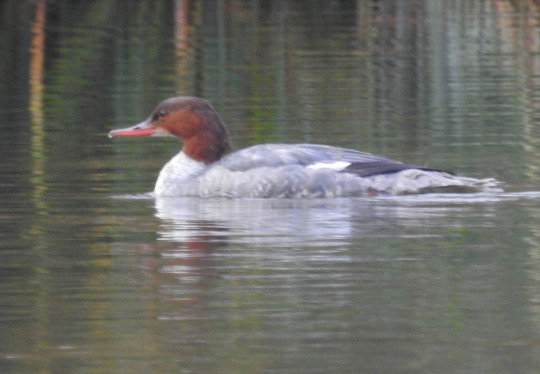


20th November 2023: Lakeside and home
Photos taken in this set: 1. A nice gang of Collared Doves out the back this morning. 2 and 10. Autumnal colours afar out the back and on the tree nearby with a fair few yellow leaves hanging on still. 3, 4 and 5. Beautiful views at Lakeside with real mature autumn colour in the landscape now which I was thrilled to be immersed in. 6, 7 and 8. Some photos of the two Goosanders which it was amazing to see again, they'd relocated to beach lake now. It was a joy to observe them for a little bit once more with their dashing red heads and neat appearance. These are such wonderful birds to have so close to home and be able to see on my lunch break and I'm loving seeing them. 9. More duck delight, one of my first two Tufted Ducks of the winter seen here, males on Concorde lake.
I saw a great list of birds at Lakeside at lunch time also including a Kestrel flying over the southern fenced off area with Magpies which was a thrilling moment. A charm of Goldfinches flying over gave me a warm feeling and it was a delight to see a Mistle Thrush again what a key bird for me at Lakeside this year. A Kingfisher dashing over beach lake, Robin, Moorhens including once entertainingly seen on a buoy on beach lake again, Great Crested Grebes and a couple of wagtails flying over the bowl area one definitely a Grey Wagtail with its sweet yellow chest and the other I couldn't quite get a clear enough view of logically another grey but possibly a Pied Wagtail with it as I'd seen one of each together in the opposite corner of the park a few weeks back were other highlights. The bowl in the eastern meadows a quirky place to see a grey. It was good to see Goldfinch and Magpie at home today too. Daisy, wild carrot still going along the northern path, rose hips, hawthorn berries and holly berries were plant highlights at lunch time.
#birdwatching#goosander#ducks#duck#tufted duck#moorhen#great crested grebe#kingfisher#kestrel#water birds#goldfinches#mistle thrush#grey wagtail#2023#outdoors#photography#walking#walk#europe#lunch time walk#collared doves#november#autumn#happy#outside#birding#wildlife
4 notes
·
View notes
Photo

東黃鶺鴒 Eastern Yellow Wagtail @afcdgovhk 東黃鶺鴒喺香港受野生動物保護條例 (第170章) 保護。 Eastern Yellow Wagtail in Hong Kong protected by WILD ANIMALS PROTECTION ORDINANCE (CHAPTER 170) #香港 #生態 #香港生態 #大自然 #香港大自然 #觀鳥 #香港觀鳥 #東黃鶺鴒 #新界 #元朗區 #天水圍 #濕地公園路 #香港濕地公園 #afcdgovhk #CarmenKennyLukeYip #HongKong #Ecology #HongKongEcology #Nature #HongKongNature #BirdWatching #HongKongBirdWatching #EasternYellowWagtail #NewTerritories #YuenLongDistrict #TinShuiWai #WetlandParkRoad #HongKongWetlandPark #afcdgovhk #CarmenKennyLukeYip(在 香港濕地公園) https://www.instagram.com/p/CfyZHBvpOSk/?igshid=NGJjMDIxMWI=
#香港#生態#香港生態#大自然#香港大自然#觀鳥#香港觀鳥#東黃鶺鴒#新界#元朗區#天水圍#濕地公園路#香港濕地公園#afcdgovhk#carmenkennylukeyip#hongkong#ecology#hongkongecology#nature#hongkongnature#birdwatching#hongkongbirdwatching#easternyellowwagtail#newterritories#yuenlongdistrict#tinshuiwai#wetlandparkroad#hongkongwetlandpark
0 notes
Photo
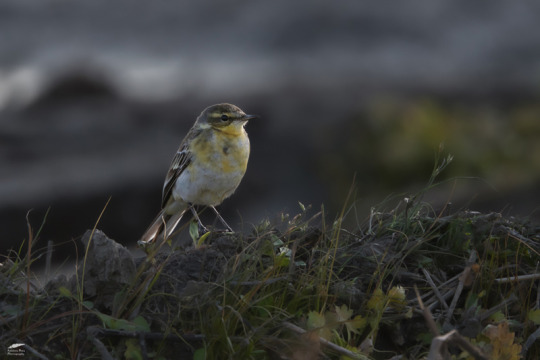
Eastern Yellow Wagtail - Alvéola-amarela-oriental (Motacilla tschutschensis)
Vila Franca de Xira/Portugal (6/03/2020)
[Nikon D500; AF-S Nikkor 500mm F5,6E PF ED VR with Nikon AF-S TC-14E III; 1/800s; F8; 400 ISO]
18 notes
·
View notes
Text
Artificial trees capture new bird species on candid camera
https://sciencespies.com/biology/artificial-trees-capture-new-bird-species-on-candid-camera/
Artificial trees capture new bird species on candid camera


Capture 4661, Sculpture Camera. Molonglo Life. http://molonglo.life/#!/capture/4661
More
An experiment from The Australian National University (ANU) using artificial trees has attracted birds and other wildlife never before seen in a damaged Canberra landscape—catching them on camera at the same time.
The experiment is a collaboration with the ACT Parks and Conservation Service and uses a series of power poles and translocated dead trees erected in landscape under regeneration.
The ANU researchers saw a four-fold increase in bird species on five recently erected power-poles. There was also a seven-fold increase in bird species across five re-purposed dead trees.
In a separate project on the same site, the birds were captured on motion-sensitive cameras hidden in the artificial structures, with the footage providing a public database for species activity.
Associate Professor Philip Gibbons from the ANU Fenner School of Environment and Society wanted to test whether artificial structures could be used to provide a home for birds and other wildlife when mature trees were cut down for residential and other development.
He says the artificial trees work better than he “could have ever hoped for.”
“Even if we plant new trees elsewhere to replace those we knock down they take a century to mature and develop suitable habitats for birds and wildlife,” Associate Professor Gibbons said.
“Globally, mature trees are in decline and we’re going to see an absence of mature trees in some landscapes by the end of this century. So these artificial structures are really key to filling that gap to preserve the ecosystem.
“And from what we can see they work. Not only did they attract birds to the landscape, but they also provided a home for ladybirds, wood spiders and microbats.”
Associate Professor Gibbons said the artificial trees weren’t a “cure-all.”
“The structures can only do so much and we found 37 percent of bird species that live in mature forests did not venture into the artificial structures,” he said.
“We need to preserve as many mature trees as we can, continue to plant more new seedlings for the future and then raise these artificial structures if we are to mitigate this deficit of mature trees for future generations.
“At the end of the day, you can’t beat real trees. But they can take years to grow. So this is a great option in areas needing regeneration or while you wait for trees to mature.”
The study area, a 50-hectare site at Barrer Hill in the Molonglo Valley, has been set aside for regeneration to offset mature trees and other native vegetation cleared for new suburbs.
The final piece of the restoration project was a “living art sculpture” created from a 400-year old yellow box tree cut down in a nearby suburb and re-erected in the offset site.
Dr. Mitchell Whitelaw from the ANU School of Art worked with American architect Joyce Hwang from University of Buffalo and Darren Le Roux of ACT Parks to install motion-sensitive cameras into the tree-sculpture.
They’ve captured images of more than 23 bird and animal species using the structures including a peregrine falcon, nankeen kestrel and tawny frogmouth.
More common species such as crimson and eastern rosellas, starlings, yellow-tailed black cockatoos, galahs, red wattlebirds, willie wagtails, red-rumped parrots, kookaburras, bats and marsupials are also using the structures.
Dr. Whitelaw’s database of pictures and videos is available at http://molonglo.life/#!/
People can watch and contribute to the content by tagging and identifying species.
“As well as some delightful and beautiful images, we’ve caught footage of a currawong raiding a starling’s nest. This is the sort of action in nature people just don’t get to see every day,” Dr. Whitelaw said.
“The database is a real-time record of the restoration of an ecosystem. We want people to feel connected to these public places and the wildlife in them.”
Explore further
Smart city planning can preserve old trees and the wildlife that needs them
More information:
Dr Whitelaw’s database of pictures and videos is available at molonglo.life/#!/
Provided by
Australian National University
Citation:
Artificial trees capture new bird species on candid camera (2019, August 23)
retrieved 25 August 2019
from https://phys.org/news/2019-08-artificial-trees-capture-bird-species.html
This document is subject to copyright. Apart from any fair dealing for the purpose of private study or research, no
part may be reproduced without the written permission. The content is provided for information purposes only.
#Biology
0 notes
Photo

This year's tour to Nome, Alaska has been utterly amazing!!! Exceptional weather allowed for T-shirt viewing of Grizzly Bear, Musk Ox, and many interesting mammals, as well as our most productive birding at this iconic site, to date. The Bluethroat pictured below was just one of five encountered on our first day! The same day we enjoyed display flights of Bristle-thighed Curlew and numerous other shorebirds. Eastern Yellow Wagtail and White Wagtail were seen at a few locations, and we saw Gyrfalcon every day of the tour. We had great displays by both Willow and Rock Ptarmigan, including some stellar photo ops. The Arctic specialities and vagrants were in full force: Emperor Goose, Arctic Loon, Ross's, Sabine's, and Slaty-backed Gulls, Lesser Sand-Plover, Reeve, Red-necked Stint, and Gray-tailed Tattler were all found on our last day. Incredible! More to come from St. Paul, where we hope the vagrant train will continue...
#birds#birding#birdwatching#nature#wildlife#birdingtours#photography#birdphotography#naturephotography#wildlifephotography#alaska#nome#nome alaska#bluethroat
24 notes
·
View notes